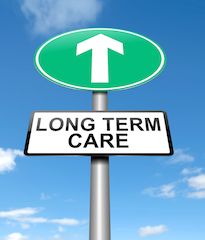RICHMOND, Va. – Long-term care costs in the United States are generally highest in the Northeast and lowest in the Southeast, according to an analysis of state-specific data released June 28 by Genworth as part of its 2016 Cost of Care Study.
It’s not all bad news for the Northeast, however. While residents of many northeastern states tend to pay more for care, the 2016 study found that care costs there tend to be rising slower than the national average – and in some cases, are declining outright.
“As our data demonstrates, where you live has a huge bearing on the cost of care, as does the setting in which you receive care,” said Tom McInerney, president and chief executive officer at Genworth. “The data is also a stark reminder of the need to plan now for how you will pay for those costs later. Understanding the cost of care is a critical first step.”
Key geographic trends for each of the most popular care settings include:
Home Care
- The cost of home care, where the vast majority of people choose to receive long-term care, has increased most during the past five years in the Western and Midwestern states of Wyoming (6.47%), South Dakota (5.03%), North Dakota (4.46%) and Nebraska (4.45%), all well above the national average annual increase of 2.13%. Despite these outliers, the average annual growth rate in the past five years across home services has been moderate in most states.
- Overall, Louisiana has the lowest cost of home care services (an average of $2,980 per month) and North Dakota has the highest ($5,331 per month).
- Home health aide costs have risen the most in North Dakota and South Dakota, at a 3.80% average annual increase during the past five years. Homemaker services have gone up a bit more in the same span.
Adult Day Services
- Adult day services costs have decreased across the nation since 2015, marking the first time since 2011 that average costs have declined in any care category. This welcome trend has been felt in numerous states, most particularly in Alabama and Delaware, where costs decreased by 4.71% and 2.67%, respectively.
- At the same time, adult day services costs saw marked increases elsewhere. New York (13.40%) and Utah (12.47%) have seen average yearly increases of more than double digits, with South Dakota and New Mexico not far behind (9.94% and 9.60% increases, respectively).
- Across the nation, monthly costs range widely from $596 in Alabama to $3,049 in Alaska – the biggest minimum-to-maximum cost spread for any category of care.
Nursing Homes
- Oklahoma boasts the lowest cost of nursing home care, with private rooms running an average of $5,019 per month and semi-private rooms coming in at $4,410 per month (35% lower than the national average).
- Alaska is by far the most expensive state for nursing home services, with nursing home rooms running an average of $24,577 per month (average of private room and semi-private room costs). This is nearly 3.5 times the national average.
- Connecticut and Massachusetts have the next-highest nursing home costs per month, at $12,874 and $11,635 respectively.
- Elsewhere, Maine has seen the lowest increase in the cost of private nursing home rooms: just 1.04% per year in the last five years. North Dakota had the highest with a 10.50% compounded annual growth rate during that period.
Assisted Living
- Southern states offer some of the lowest monthly costs for assisted living facilities, with Oklahoma, Georgia, and Alabama ranking as three of the four least-expensive states for these services (Missouri, a Midwestern state, has the lowest costs in this category).
- Northeastern and South Atlantic states – including the District of Columbia, Massachusetts, Delaware, and Maine – have some of the more expensive costs for assisted living care. D.C. peaks at fees of $6,700 per month; it also has the highest annual average increase in the past five years, at 9.02%.
- Vermont’s average annual increase is 6.19% and two Midwestern states – North Dakota and Nebraska – also face some of the highest average annual cost increases in this category.
- Notably, several Southern states have seen either a decrease or no change in cost on an annual basis over the past five years, with South Carolina (0.46% decrease in costs), West Virginia (0.08% decrease) and Alabama (0.01% increase) leading the charge.
See also: Summary of 2016 Genworth Cost of Care Survey Findings
About Genworth’s 2016 Cost of Care Study: Genworth’s annual Cost of Care Survey is one of the most comprehensive studies of its kind, covering over 15,000 long-term care providers nationwide. The survey includes 440 regions which include all Metropolitan Statistical Areas defined by the 2015 Office of Management and Budget. Genworth annually surveys the cost of long term care across the U.S. to help Americans plan for the potential cost associated with the various types of long term care available in their preferred location and setting. The survey also provides state-specific cost of care data for all 50 states and comparison to the national median. CareScout®, part of the Genworth Financial family of companies, has conducted the survey since 2004. Located in Waltham, Massachusetts, CareScout has specialized in helping families find long term care providers nationwide since 1997. Genworth’s 2016 Cosat of Care Survey was conducted during January and February 2016.
About Genworth Financial: Genworth Financial, Inc. is a Fortune 500 insurance holding company committed to helping families achieve the dream of homeownership and address the financial challenges of aging through its leadership positions in mortgage insurance and long term care insurance. Headquartered in Richmond, Virginia, Genworth traces its roots back to 1871 and became a public company in 2004. For more information, visitgenworth.com.












